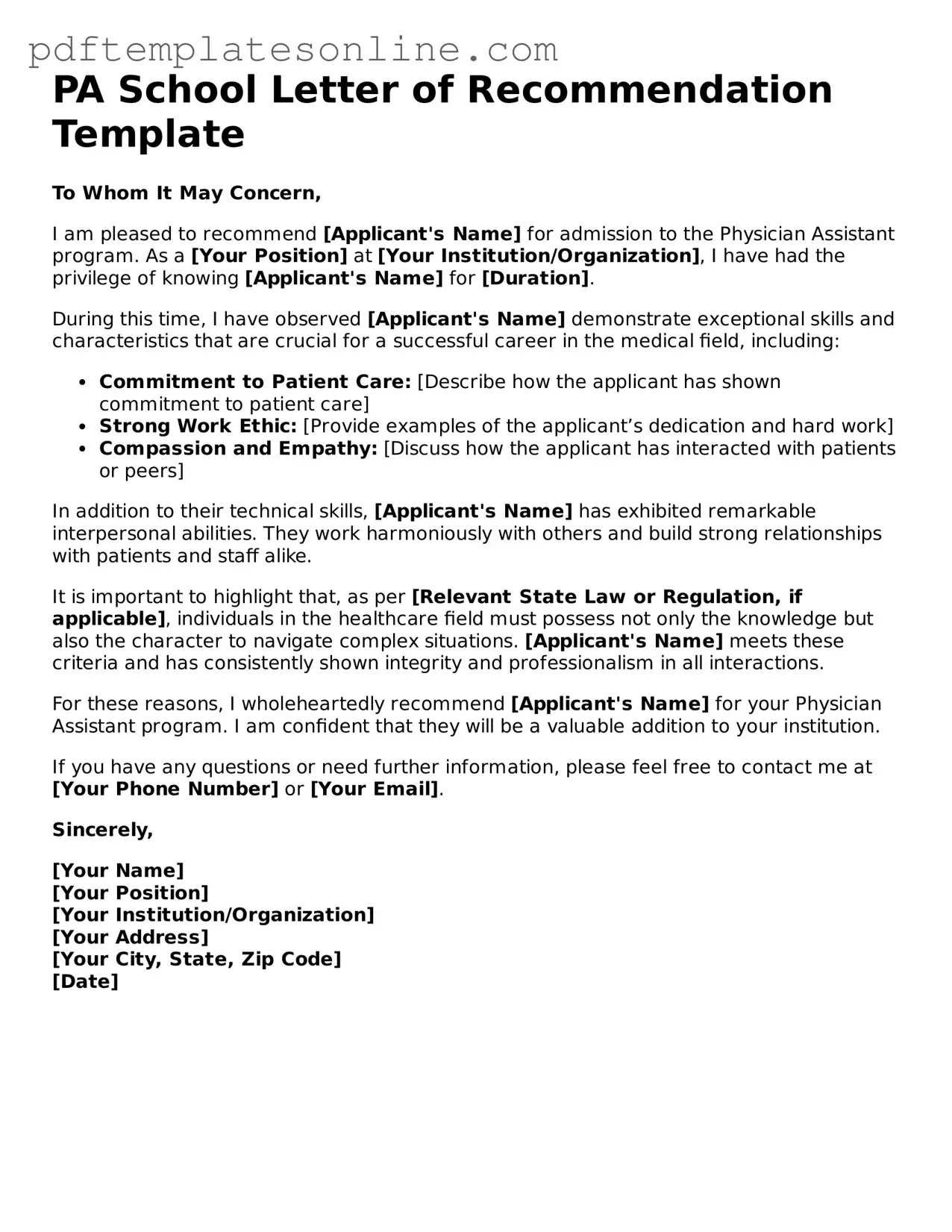When applying to physician assistant (PA) schools, a letter of recommendation can significantly impact your application. However, many applicants make common mistakes when filling out the PA School Letter of Recommendation form. Recognizing these pitfalls can help ensure that your application shines.
One frequent mistake is providing insufficient information about the recommender. It's essential to include their full name, title, and relationship to the applicant. Without this information, admissions committees may struggle to understand the context of the recommendation, which could diminish its impact.
Another error is neglecting to communicate specific examples of the applicant's skills or achievements. A generic recommendation lacks the personal touch that schools look for. Recommenders should highlight unique qualities or experiences that set the applicant apart from others.
Many applicants fail to give their recommenders enough time to complete the letter. Rushing the process can lead to a lack of detail or a rushed submission. Ideally, applicants should provide at least a month’s notice, allowing recommenders to craft thoughtful letters.
Some individuals mistakenly assume that the recommender knows the applicant's strengths and weaknesses without any guidance. It’s helpful for applicants to provide a brief overview of their experiences and aspirations. This context enables recommenders to write a more tailored and compelling letter.
Another common oversight is not following the specific instructions outlined by the PA program. Each school may have unique requirements regarding the format, length, or content of the recommendation letter. Ignoring these details can result in disqualification or a negative impression.
Additionally, applicants sometimes forget to express gratitude to their recommenders. A simple thank-you note can go a long way in maintaining positive relationships. It shows appreciation for the time and effort that the recommender invested in supporting the applicant's goals.
Some individuals also overlook the importance of proofreading the recommendation form before submission. Spelling mistakes or grammatical errors can undermine the professionalism of the application. A clean, well-organized form reflects attention to detail and seriousness about the application process.
Lastly, many applicants fail to follow up with their recommenders after the submission. Checking in to confirm that the letter was submitted can help ensure that everything is in order. It also reinforces the importance of the recommendation in the applicant's journey toward becoming a physician assistant.
